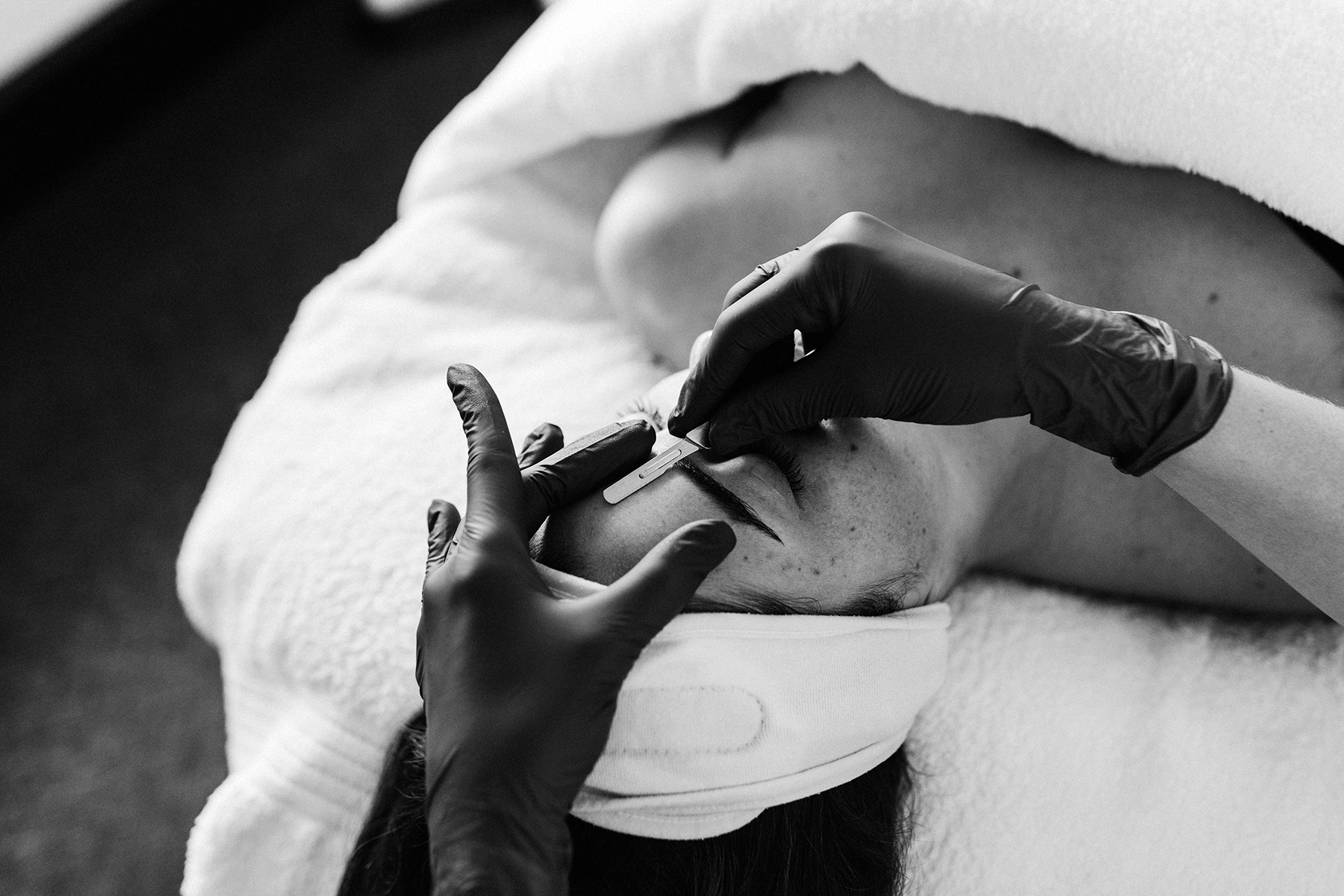
Dermaplaning is an effective and safe exfoliation procedure. It uses a sterile surgical scalpel to shave the surface of the skin to remove excess dead skin and peach fuzz hairs. The tool is held at a 45 degree angle and is brushed along the skin to remove the hair and skin cells. The procedure is only performed on the face and is not used for shaping the eyebrows, which the hair is much thicker. It is generally a stand alone procedure, but it does create deeper product penetration boosting the products effects. The procedure makes skin look and feel smoother and will reduces the appearance of acne scars.
What are the Benefits of Dermaplaning?

How Often is Dermaplaning Performed?
Dermaplaning is usually performed every three to four weeks. It is good to have the skin complete its normal rejuvenation cycle, which is thirty days, before going back and having the treatment done. The procedure generally will remove between two to three weeks of dead skin from the facial area.
People who suffer from acne or have excess oil should not have dermaplaning performed. The reason why you want to avoid this procedure is because if the hair is removed from the area, the oils may cause bacteria growth which could lead to acne breakouts.
There is no need to worry about the hair on your face getting any darker. Since dermaplaning only targets the vellus hair (peachfuzz) the hair will grow back the same size and color. It is physiologically impossible for the hair to grow back thicker and dark, so no need to panic and worry.
Never do this procedure at home. Leave it to the professionals to ensure a safe and effective treatment.
You don’t need to plan any downtime to recover from a dermaplaning treatment. You may experience redness or feel like your skin is scraped in the two or three days right after the procedure.
You may notice that your skin looks brighter immediately after you’re finished with a dermaplaning treatment, but it often takes a few days to appreciate the full results. As any redness subsides, you’ll be able to see the results more clearly in the days afterward.
Results of dermaplaning aren’t permanent. The procedure claims to clear away up to three weeks’ worth of dead skin cells. After three weeks to a month, your results will have faded.
After a dermaplaning treatment, you’ll need to be extra careful about sun exposure. Sun damage could reverse the effects of dermaplaning, or create pigment blotches on your freshly uncovered skin cells. In the weeks after a dermaplaning treatment, don’t leave the house without wearing sunscreen on your face.
Risks and Side Effects
Infection and scarring are rare after dermaplaning, but they do occur. If you develop a scar from dermaplaning, your doctor may need to treat the scar tissue with a steroid injection to soften the scar tissue.
Another possible side effect is a patchy skin pigment in the area where you have the procedure, which may decrease or disappear as time goes on.